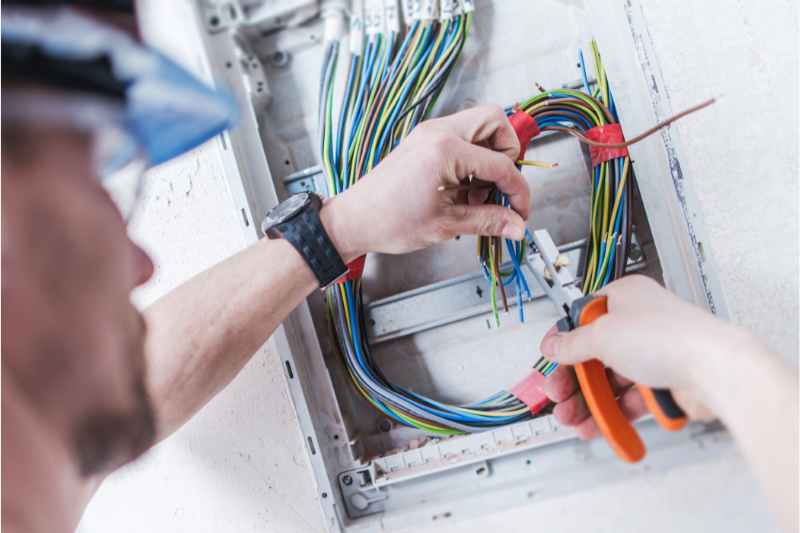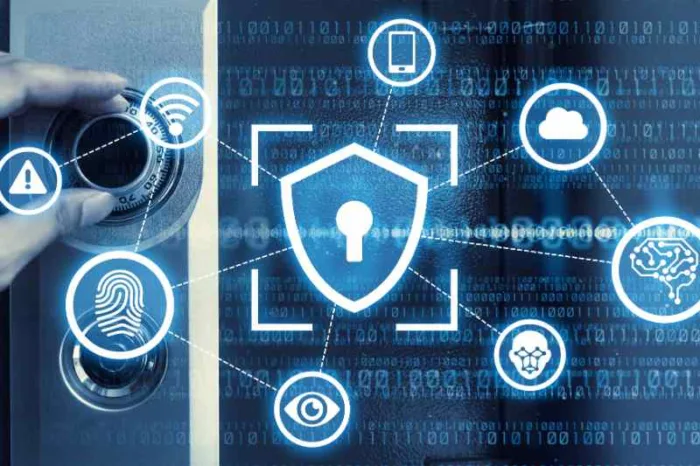Key takeaways
- Security system design involves choosing which security devices you’ll use and how they’ll interact with each other.
- Designing a good security system is important because it makes your building safer and your residents happier.
- Consider hiring a low-voltage serviceman to set up your security system.
- The five most important components of a security system are video surveillance, access control, alarms, intercoms, and computer systems.

Before hiring a security integrator to improve your property’s security, you’ll want to be familiar with all the security system design elements available. Creating a safe environment for your residents that doesn’t also inconvenience them can be a tricky task. Luckily, this guide is here to help.
First, we’ll go over what security system design actually is alongside its benefits. Next, we’ll review possible security system designers you’ll want to consult. Finally, we’ll provide five security system design elements to incorporate at your property.
This post covers:
- What is security system design?
- Why is security system design important?
- Who to hire for security system design
- 5 security system design features to put in your building
What is security system design?
Security system design is the process of developing a layout or framework for a security system to be installed in a building. A good design includes security technology — such as access control systems, surveillance cameras, sensors, and alarms — that integrate with one another.
Why is security system design important?
Security system design is important because it keeps your building’s security technology and safety protocols organized and effective.
Without proper security design, different technologies won’t harmonize with each other.
What does this mean?
A poorly designed security system could result in residents having to input their access code on two different devices just to gain entry to their apartment. Alternatively, in a building with a good security design, they would only have to input their PIN code once to access the property.
Buildings with poorly designed security systems encounter these problems:
- It’s difficult for building staff to add users or update tenant information in the system.
- Tedious or constant maintenance.
- Security weaknesses, otherwise known as blind spots.
- Accessing and navigating the building is cumbersome or difficult.
- Dated technology slows things down or creates hiccups.
- Fail to uphold workplace privacy laws.
In addition to solving all of the above problems, thoughtful design allows you to control and monitor all of your security devices from one hub thanks to security system design software. This gives you complete, real-time control over your entire system.

Who to hire for security system design
No single security system designer works for every property. Often, you’ll want to consider hiring multiple people when designing your building’s security system.
One type of contractor that you should look into is a low-voltage serviceman. Often, good security design depends on the installation process. A low-voltage serviceman will wire your system’s devices in a cohesive way that operates efficiently while still being easy to maintain.
You will also want to look into security system design software such as SystemSurveyor. This company offers design layouts that show you exactly where security technology should be implemented on your property. Their design templates are highly detailed — right down to specific floors and other spaces on your property.
Companies like SystemSurveyor can be useful. However, if you choose the right access control technology, you’ll be able to design your own security solution without much trouble.
5 security system design features to include in your building
Security system design features often include various pieces of technology that cohesively fit together to benefit your building. All of the following technology is important to consider adding to your property.
A well-designed security system should include:
1. Video surveillance systems
Video surveillance systems typically consist of several cameras strategically placed around and within a building. Surveillance cameras are proven to deter crime. But when they can’t be a deterrent, they’re still useful for police reports and insurance claims.
What’s more, many video surveillance systems can be integrated with other security technology.
For example, you can have a surveillance camera overlook your front door’s keypad entry system. This way, you’ll know if anyone vandalizes the device or misuses it.
2. Access control
Access control is crucial to maintaining security at any property. It’s a broad term that refers to the process of controlling who can and can’t access a building, room, or space.
There are several kinds of access control technology, including but not limited to keypad entry systems, door locks, and key fob readers. In a residential property, there are access control systems in place at all entrances to the building as well as individual residential units.
Make sure your building’s access control system is cohesive. Nobody wants to use one key fob to get into the building and then a separate PIN code or key card to enter their unit. So, it’s best to synchronize your building with one system, preferably made by the same security system company.
Pro tip: Opt for a robust access control solution that integrates hardware and software. The best ACS will offer video intercoms and keypads in addition to software like amenity reservation platforms and a front desk station that empowers staff to view live video feed of the intercoms and chat directly with guests remotely.
Watch how ButterflyMX works:
3. Alarm systems
While they’re commonly found in single-family homes, alarm systems are still useful in multifamily and commercial buildings. Alarm systems can be installed at doors and windows (such as emergency-only exits) that emit a loud noise and alert building staff to the location.
A multifamily or commercial security alarm system that’s part of a good security system will utilize smart technology to notify staff when and where the alarm has gone off.
4. Intercom systems
Adjacent to access control systems are intercom systems. Intercom systems provide a way for visitors to request access to the building — and for tenants to remotely grant them access. Additionally, intercom systems allow residents to communicate with visitors and delivery personnel at the front entrance to confirm who’s there.
When designing your security system, opt for the latest in intercom technology, such as smartphone-based video intercom systems. This way, residents can visually confirm who’s requesting access via video call, which enhances security. It also allows them more direct control over how they communicate through the intercom system. Namely, residents don’t have to be at home to remotely grant access to a trusted visitor.
5. Computer systems
Modern security design should be controlled and organized by computer systems. We’re referring to physical computer systems that could be located in your main office. However, we also mean your phone.
All of your security technology should be accessible from mobile apps that building staff can monitor, update, and control remotely. Efficient computer systems will also allow you to update, add, and delete user information for residents in your building.







